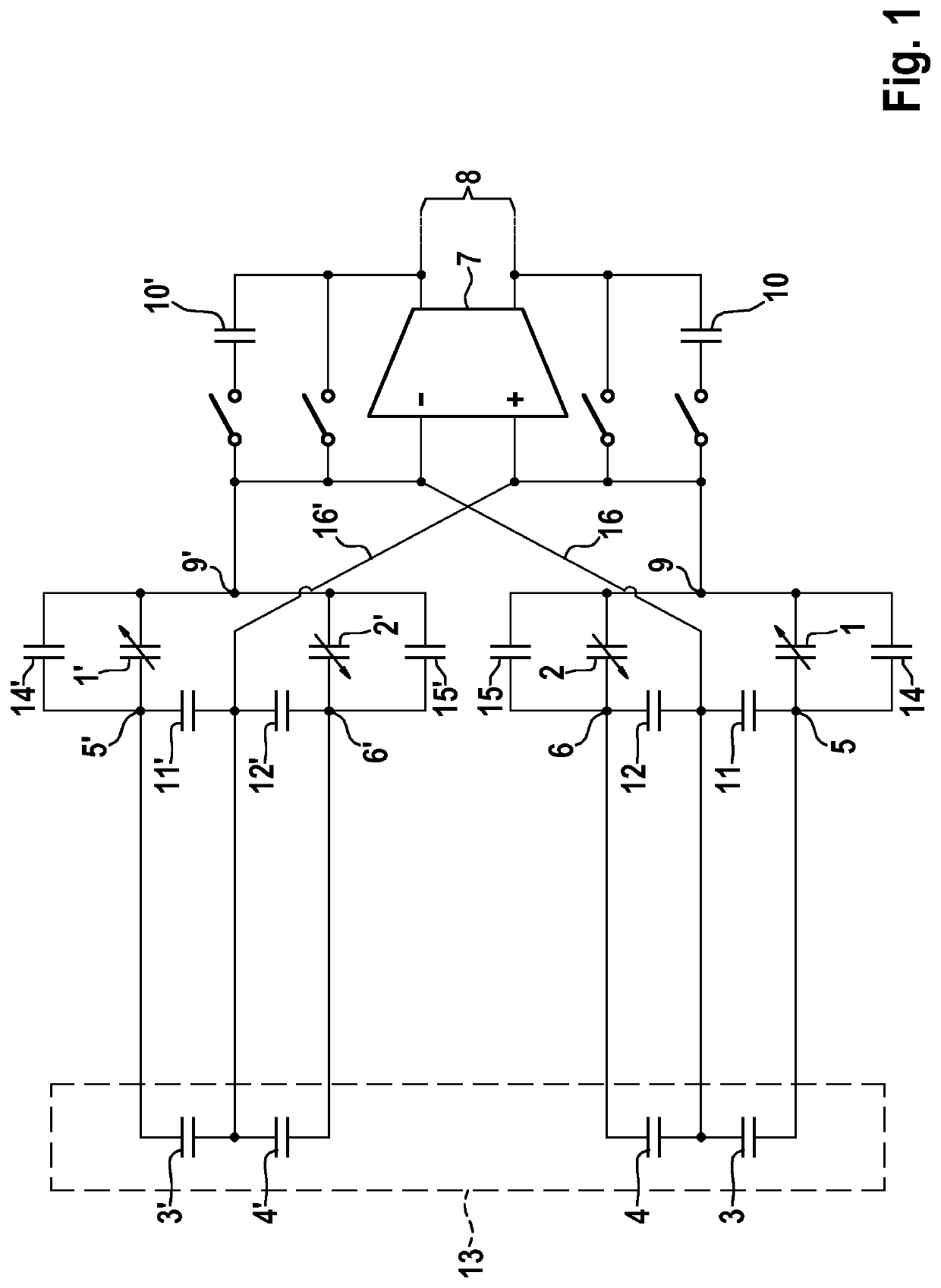Microelectromechanical inertial sensor including a substrate and an electromechanical structure situated on the substrate
a micro-electromechanical and inertial sensor technology, applied in the direction of speed measurement using gyroscopic effects, instruments, surveying and navigation, etc., can solve the problem of non-linearity of above linear relationship, fluctuations impair and partially considerable parasitic capacitance always exist, so as to improve the linearity of sensor characteristic curve
- Summary
- Abstract
- Description
- Claims
- Application Information
AI Technical Summary
Benefits of technology
Problems solved by technology
Method used
Image
Examples
Embodiment Construction
[0018]FIG. 1 shows the schematic circuit diagram of a possible implementation of a capacitance-to-voltage transformer for an inertial sensor including capacitive compensation structures. In this specific embodiment, the sensor core includes two mass oscillators, each mass oscillator including a mass electrode (first electrode), which is situated between two substrate electrodes (second and third electrodes). The two mass oscillators and the associated electrodes are identical in terms of the design, however electrical potentials having opposite polarities are applied thereto. Depending on the deflection of the first mass oscillator and the mass electrode connected thereto, a first capacitance 1 is present between the first substrate electrode and the mass electrode, and a second capacitance 2 is present between the second substrate electrode and the mass electrode.
[0019]In the case of a perfect charge equalization between the two electrode pairs, the output voltage is linearly depen...
PUM
 Login to View More
Login to View More Abstract
Description
Claims
Application Information
 Login to View More
Login to View More - R&D
- Intellectual Property
- Life Sciences
- Materials
- Tech Scout
- Unparalleled Data Quality
- Higher Quality Content
- 60% Fewer Hallucinations
Browse by: Latest US Patents, China's latest patents, Technical Efficacy Thesaurus, Application Domain, Technology Topic, Popular Technical Reports.
© 2025 PatSnap. All rights reserved.Legal|Privacy policy|Modern Slavery Act Transparency Statement|Sitemap|About US| Contact US: help@patsnap.com

